The USS Abraham Lincoln Wasn’t On The Radar
In January 2009, about a year after his high school graduation, Jack Ferris began what would become a 12-year career in the United States Navy. During that time, he would serve aboard two of the newest aircraft carriers in the fleet. On those ships, he would eventually travel to far-flung countries and ports of call and participate in a number of policing actions carried out by the Navy in the Middle East. For Jack, however, the path from high school graduate to getting lost inside the maze-like interior of the USS Abraham Lincoln on his first day aboard was not straightforward.
Jack says, “I was doing ITT Tech, and I started working at EB Games. There was a Navy recruiter’s office right across the parking lot. The Navy guys would come in because they like to play video games. I became friends with one, and me and a co-worker had talked about maybe joining the Navy together. They had a buddy program where you go through boot camp together and do schooling together, assuming you get the same job. I was a little hesitant. One day, my friend told me, ’Hey, I signed up. I’m leaving.’ I was like, ‘Wait, what about me? We were supposed to do this together!’
“A year later, my recruiter buddy came in the store and he was like, ‘Hey, I got a favor to ask you.’” The favor, it would turn out, had to do with recruitment numbers and incentives. The recruiter was close to achieving a numbers goal and simply needed Jack to enlist, go through some testing and a physical, and then “decide” to not go through with it all. It wouldn’t impact Jack’s ability to actually enlist later on, and it would get the recruiter where he wanted to be.
Who could refuse a favor like that? A military entrance exam and a full physical, while not normally Jack’s idea of a good time, would at least help out a friend. He told the recruiter, ‘Sure, sounds good,’ and a date and time were set.
Jack explains, “I wasn’t supposed to tell anybody what was going on; I was just supposed to pretend like I was actually joining. My friends were like, ‘Wow, you’re joining the Navy?’ And I said, ‘Yep, about to get out of here, going on an adventure!’ Everyone was convinced, even my girlfriend at the time. We got in this huge fight the night before I was supposed to go to MEPS ( the Military Entrance Processing Station). We argued till four in the morning about it. I didn’t even sleep that night.”
Recruitment and Epiphanies
At the processing station, Jack was asked to take a few standard tests including the Armed Services Vocational Aptitude Battery (ASVAB). Jack continues, “I went down there and we did a bunch of the stuff. I ended up getting a 90 on the ASVAB.” With such a high score, he would be a desirable recruit, but, for him, this was all still just a performance.
He was taken into the Jobs Office for an interview with a service counselor. The Navy service counselor asked, “Why the Navy?”
Jack responded with, “Top Gun!” He recalls, “My mom has this book of all my elementary years and I think it was in second or third grade my dream job was to be a Navy pilot. I always wanted to be a pilot. I always thought of the Navy from Top Gun.”
This response of “Top Gun” was one that Navy Recruiters had been accustomed to hearing. In 1986, Paramount Pictures had released the movie Top Gun and it had quickly become the ultimate recruiting tool for the U.S. Navy. It elevated naval aviators to rock-star status and drew recruiters to the lobbies of theaters to catch wide-eyed potential recruits at the peak of their interest. Even many years after the premiere, the movie still resonated with those who dreamt of joining the U.S. Navy to become pilots and fly off aircraft carriers.
Hearing that as the reason, nearly 12 years after the release of the movie, triggered a round of laughter. The service counselor pressed Jack. “No, seriously, why do you want to join the Navy?”
It occurred to Jack that his initial answer was actually the truth. So his response to the service counselor was simple. He pointed to his recruiter friend and answered, “Top Gun and this guy!”
The interview moved on. Jack was asked what he wanted to do in the Navy and replied, “Well, I would like to be a pilot, but I know you need a Bachelor’s Degree to do that.”
“Yeah, you do,” the service counselor confirmed. “But how about the nuclear field, working on nuclear reactors? You’ll get sign-on bonuses, and get rank fast. It’s the fastest way to become a pilot.”
“Sure, sounds good!” Jack told them. “I was open to anything because it wasn’t real at the time.” And yet, looking back on it, he realizes that they were being honest with him. He says, basically, “In Nuke School you spend about a year and a half, but it’s worth over three years of credits. So I can go and get my nuclear engineering degree and it would take me less than a year.“
The service counselor at the processing station left for a bit to look up some of Jack’s information and then returned. “Oh, we have an issue here,” he said. “You didn’t graduate high school.” This was news to Jack, who replied that he certainly had. “But the transcripts say differently,” continued the service counselor. “How about this? We will sign you up for one of these other three jobs and then we’ll have you take this Nuclear Qualifications Test. If you pass that, we can put in a waiver for your high school diploma not being a thing.”
That sounded fine to Jack because at this point he wasn’t actually committing to anything. He says, “I ended up picking Missile Tech which is a submarine-only position– basically, just working on the warheads. I think submarines are cool. They got me scheduled for one of those [Nuclear] tests and me and my recruiter buddy headed back.”
Jack was exhausted. A night of arguing with his girlfriend combined with a day of interviews and test-taking had wiped him out, and he quickly fell asleep on the ride home. But then, something clicked in his mind. He recalls, “I passed out in the car immediately. I had some dream while I was sleeping in that car. I had this epiphany moment. I woke up, sat up in my chair and I said, ‘Don’t worry about getting me out. I’m just going to go.’”
The recruiter was surprised. He said, “No, you shouldn’t do that, you should just stay.” But something had changed, and Jack had made up his mind.
He told the recruiter, “No, I want to do this.” Jack chuckles a bit as he remembers that moment. “That’s how it became a reality. Some dream I can’t remember the details of. When they called to tell me I had passed the [Nuclear Qualifications] test, they said, ‘Hey good news. You passed the test; also, they found your transcripts!’”
Into the Navy and Back Into School
Jack went on to complete basic training in Chicago and was shipped off to South Carolina for Nuclear Power School with a plan to work on nuclear reactors beneath the ocean’s waves. Referred to as “Nuke School” by those who attend, the program offered is one of the most stringent and fast-paced programs a person can attend. The curriculum demands 55 to 80 weeks between classroom and study time. Topics cover advanced math, engineering, and scientific principles.
“There are three parts to Nuke School,” Jack explains. “The first part is you go to ‘A’ School (officially Nuclear Field ‘A’ School). There are three basic jobs in the Nuclear Navy. You have machinist mates, which are the mechanics; electricians mates, which are the electricians; and then the electronics technicians, which basically work on all the logic controllers and things that control the reactor. Homer Simpson is kinda like an electronics technician.
“The mechanic’s school is three months long. For the electricians and the electronics, it is six months for their ‘A’ School. Classes graduate every week, but after that, there’s Power School, and that’s where you actually learn the nuclear side of things. In ‘A’ School you’re just learning about how to be an electrician, or a technician, or a mechanic. They kind of pepper in a little bit of the nuclear stuff because that’s going to be the future for you, but you don’t really learn about it.
“Power School (officially called Naval Nuclear Power School), that’s six months of learning about mechanical-electrical theory, nuclear physics, and chemistry, because we have to maintain chemistry in the powerplant. After that, you go to Prototypes. There are two locations for that. There’s Ballston Spa up in New York and Charleston. So ‘A’ School and Power School are both in Charleston, South Carolina. The ones in Charleston are actual subs that used to go on missions. They decommissioned them and they chopped them up. They have, basically, the front of the boat where they have some of the instructors sit up there and they do runtime with students. And then they have the back of the boat, where the reactor is, and the engine room.”
The training is geared toward submarines, as that is where most of the nuclear reactors in the Navy are in service. Currently, the U.S. Navy has over 80 nuclear-powered ships, and about 90% of them are submarines. There are currently 10 aircraft carriers and one research vessel. Where graduates go is based on need within the Navy. For the most part, people graduate and move onto submarines, but if there is a need and you graduate at that time, you could end up on a carrier.
“I will never forget,” says Jack, “there was this big party on-base housing and I think there was underage drinking going on and stuff. The party got busted up and all these people got held back a class; essentially, their career was put on pause for a couple of months, and I ALMOST went to that party. If I had gone, I would have got in trouble, and then I probably would have gone to a submarine.”
His First Ship, The USS Abraham Lincoln
After nearly two years of training and schooling, Jack was finally going to be on a ship, and it would be a big one. With a homeport in the state of Washington, The USS Abraham Lincoln is 1092 feet long (333m) and 252 feet wide (77m). It can travel at 35 MPH, (56 KPH or 30+ Knots), and houses 5,680 personnel that operate the ship, the 90 airplanes, and the helicopters that it carries. It can operate at sea for at least 20 years before refueling. It is a technological marvel and is an awe-inspiring thing to see. This, however, is the military, and inspiring awe is not something that comes naturally.
“On my first day there, this was the week of Thanksgiving, so it was already a pretty minimal crew. They had told us to show up ‘here.’ We ended up waiting in the Exchange, which is the little store where we can buy stuff, for like 5 hours before someone came and got us. We couldn’t get to the ship because it was secure; [it] was in a shipyard period. There were fences and gate guards and stuff like that.
“Someone had to come out and escort us to the ship. We get there [on board] and they set us in a classroom and forgot about us for another four or five hours. It was like 50 degrees in that room. We didn’t have coats for it; we’d just come from Charleston, South Carolina.” Eventually, someone came and told them, since it was Thanksgiving week, to come back a week later. Jack didn’t mind. “We showed up on a Tuesday and they told us not to come back until next Monday. So it was a kinda nice, free vacation.”
Nearly a week later, Jack was finally on the carrier for real. He remembers his first day onboard and trying to navigate the huge ship. “They have what are called bulls-eyes [that] have three numbers. It will be whatever floor you are on, whether you are left or right (odd or even) of the center of the ship. The higher the number, the farther out from center you are. The last number is the frame number. Basically, every 10 feet is a frame and that’s numbered from the front of the ship all the way to the back of the ship. I got lost for several hours, just walking around trying to figure out how to get places.”
Even though he trained for subs and ended up on a carrier, Jack has no regrets. He could go up on deck and see the sun and feel the wind, and he got to go ashore all around the world, which are luxuries not afforded to those on a submarine. He also got to have his own “Top Gun” experience watching the planes get catapulted off the ship and then landing by catching the cables.
“It’s kinda loud,” he says in an understatement about being in an area where you can see the flight operations. “It’s called Vulture Row. You’re sitting up there and you have earplugs in and earmuffs on top of that– double hearing protection is required. The jet blast deflector comes up behind the engines of the plane and they start taking it up to power. You feel this immense heat. Your whole chest is rumbling because the sound is so physical. And then the catapult takes it away, and the heat goes away, and the sound dissipates. I don’t know, it’s kinda cool,” he finishes with a chuckle.
Before leaving the Navy in 2020, Jack also had the rare opportunity to leave his ship while at sea, which means being in a plane that is getting catapulted off the ship. It is something that most sailors on a carrier will never get to experience. He says, “You remember in Spaceballs [The Movie], when they go to ludicrous speed and he says his brains are going into his feet? That’s what it feels like!
“They have the seats facing backward and that’s for when you’re landing. When you’re taking off, they tell you to put your head down between your knees; that way, you’re not getting ripped around. It feels like someone is violently yanking you out of your chair. Then they turn the plane, and it’s a lot of Gs for the average person. I was starting to feel numb from it; they were turning so hard and so fast, but it was cool!”
Amidst all the noise, people, and machinery that allow a technical marvel like an aircraft carrier to operate, Jack’s most warm memories from his 12-year career are a little surprising. He often refers to movies, and this time Forrest Gump comes to mind. “There’s a part at the end of the movie when he’s [Forrest Gump] talking to Jenny about his time in Vietnam, and his time when he was running across the country and just kind of giving an admiration to the beauty of nature. That’s what I feel when I think about that kind of stuff.
“There is a lot of rare sea life you get to see out there. I don’t mean rare as in ‘rare for the world,’ but things that people [usually] don’t get to go see. And then there’s the green flash when the sun is setting and hits the horizon,” which is an atmospheric phenomenon that is rare and difficult to see.
One of Jack’s most vivid memories is the bioluminescence in the ocean caused by the ship. “As you’re going through the water and the waves are breaking, it’s pitch black everywhere, but you see these neon streaks through the water. There was even this one night me and my friend went out to the fantail, which is the back of the ship, and our trail is the only thing you could see. It was pitch black, you couldn’t see the horizon, but you could see this neon trail going all the way to the horizon. That was pretty incredible.” It was a moment that would not have been if it hadn’t been for all the twists and turns, timing, and circumstances that brought him to the USS Lincoln.
Interview Conducted January 2021 / All photos courtesy of Jack Ferris
Please follow The Candid Badger so you don’t miss any of our great stories!

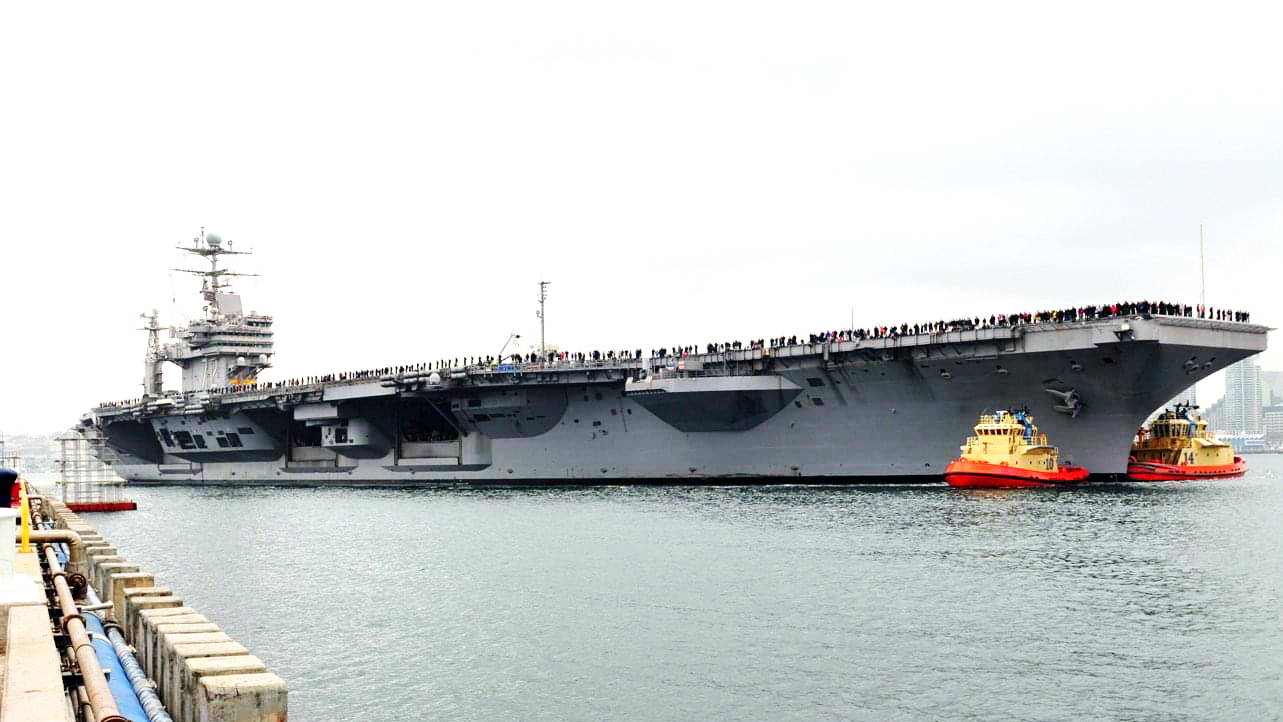

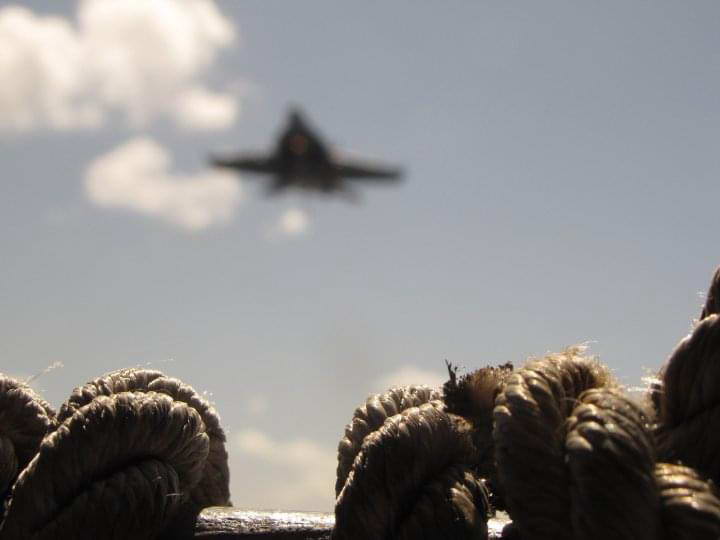
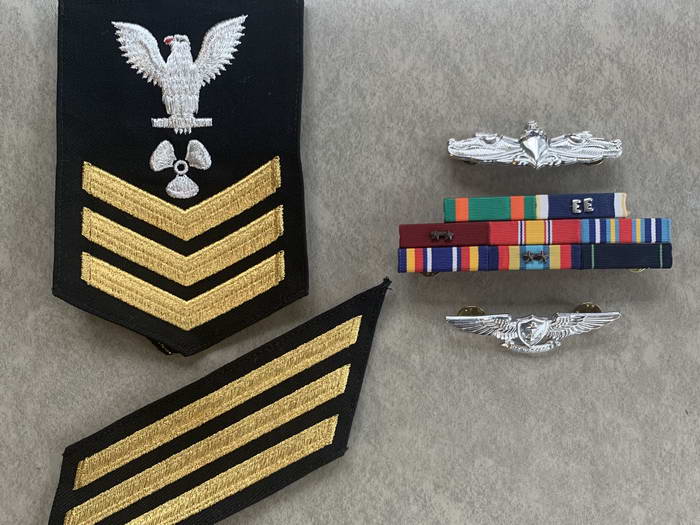
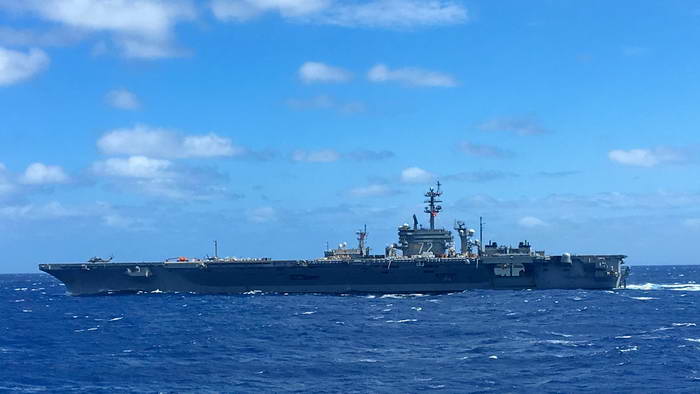
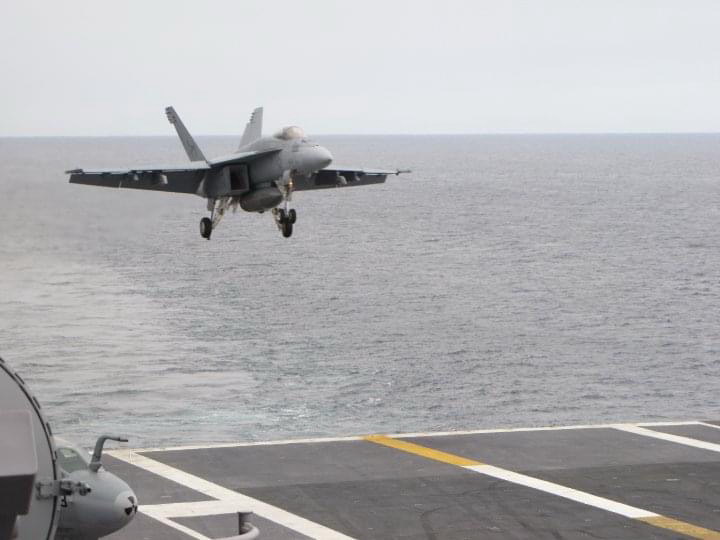
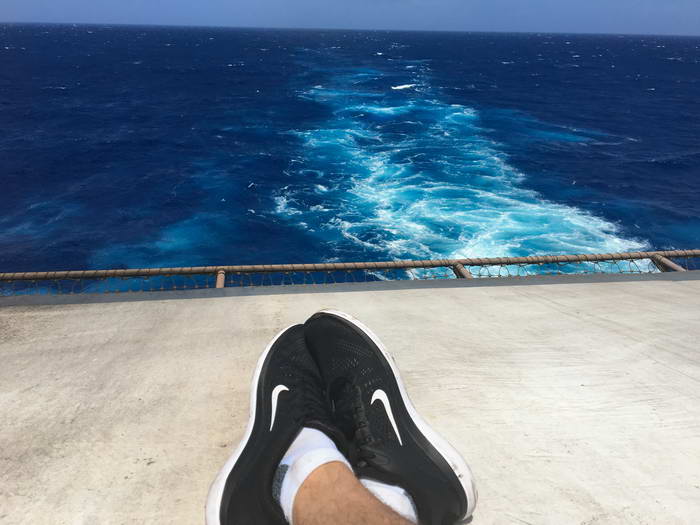



0 Comments